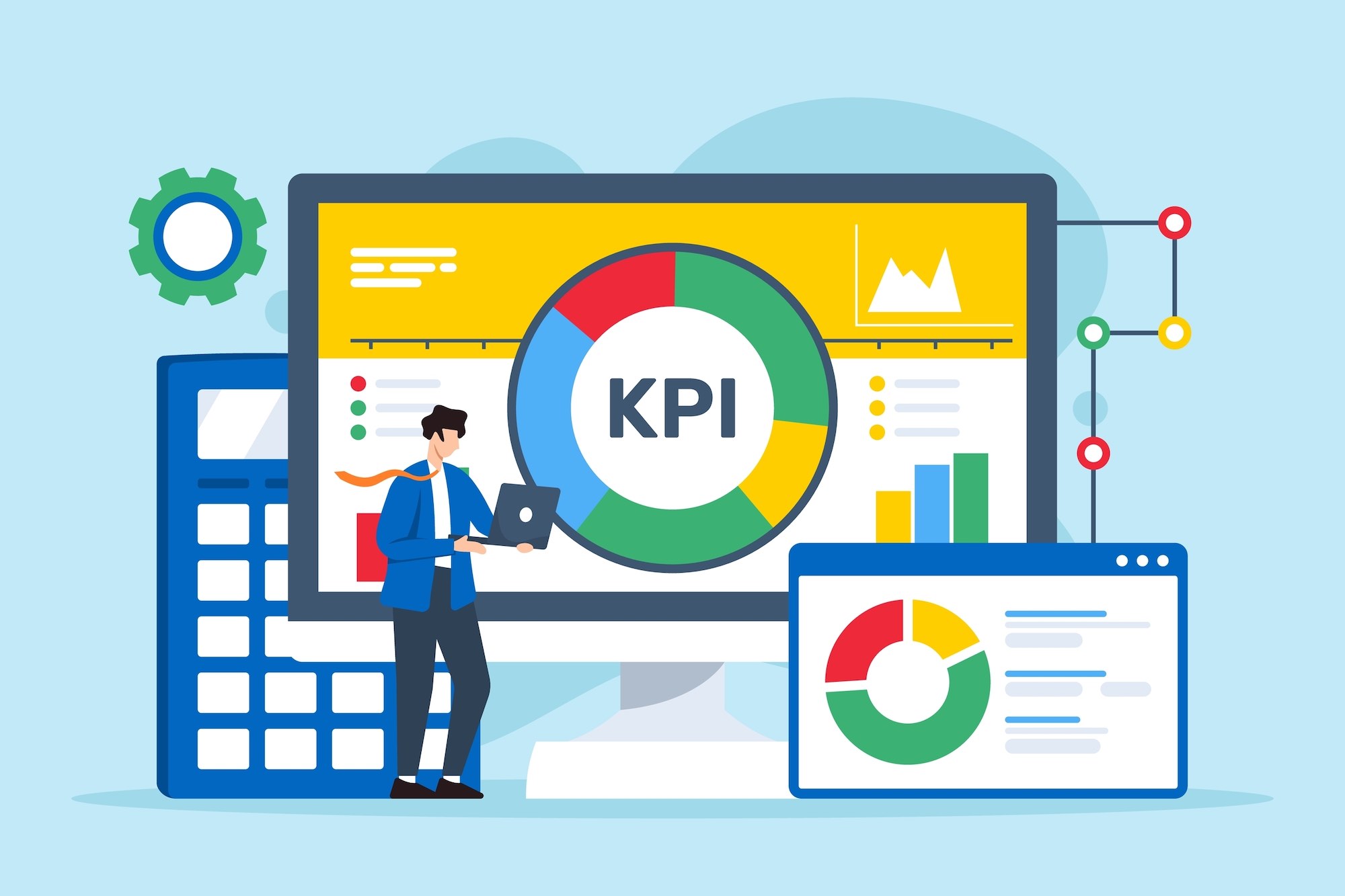
One of the key characteristics of digital marketing is that it requires fast decision-making. With constantly evolving platforms and channels, you need to ensure you’re staying up to date with market trends and consumer behavior.
Analyzing your efforts and prioritizing the right data requires focusing on key performance indicators (KPIs) that will help you evaluate whether you’re meeting your marketing goals, as they reflect the effectiveness of your strategy.
By continuously tracking and analyzing KPIs, you can make data-driven decisions, optimize your strategy, and achieve more successful outcomes.

However, each digital marketing channel has different KPIs. Determining which KPIs a company should define is not always easy. Each business can define the KPIs it deems most relevant based on various criteria, such as the type of business, the media used, and its goals. In many cases, this process involves some trial and error.
Below we present the most essential digital marketing KPIs across all channels (SEM, SEO, email marketing, social media), as well as the key goals a business may have:
Leads
The number of people who have expressed interest in a product or service by filling out a form and are likely to become customers. For example: someone who has filled out a contact form on our website or signed up for a free trial is considered a potential customer.
Cost Per Lead (CPL)
CPL is the amount we pay to acquire a new lead from a marketing activity. It is calculated with the following formula:
CPL = Campaign Cost / Total Number of Leads
Conversion Rate (CVR)
This metric shows the average number of conversions per click from Google search results (SERP) or ad clicks and is expressed as a percentage.
Conversion Rate = (Number of Conversions / Number of Clicks or Actions) × 100
Example: If an ad receives 1,000 clicks and results in 100 conversions, then the conversion rate is 10% (100 / 1,000) × 100.
Customer Lifetime Value (CVL)

This refers to the total profit a business expects to earn from a single customer over the entire duration of their relationship. (Monique Danao, 2023)
It can be calculated in different ways, either using historical data or predictive models with machine learning.
Predictive models help identify the most profitable customers, products with higher profit margins, and ways to increase purchase frequency.
Historical models are simpler, using past data to predict future customer value, but they don’t assess whether the customer will remain loyal. Value is estimated using average purchase value.
Simplified Formula:
CLV = Average Purchase Value × Average Purchases per Year × Average Customer Retention Time
Example: If the average purchase value is €100, with 7 purchases per year, and 3 years of retention:
CLV = 100 × 7 × 3 = €2,100
Return on Ad Spend (RoΑS)
A critical performance metric in digital marketing, ROAS measures the revenue earned for every euro spent on a campaign.
Formula:
ROAS = (Revenue from Ads / Ad Spend) × 100
Return on Ιnvestment (ROI)
ROI refers to the net profit generated by a marketing action relative to its cost.
Formula:
ROI = (Net Profit – Marketing Costs) / Marketing Costs
Keyword Ranking
Measures the position of your website in search engine results for a specific keyword.
Backlinks
The number of external websites linking back to your website.
Organic Sessions
The number of visits to your website from users who clicked on organic search results.
A session is a period of time during which a user interacts with your site or app. Example: A user visits your website, browses a few pages, and leaves. That counts as one session.
Cost Per Acquisition (CPA)
CPA measures the total marketing cost required to acquire a paying customer through a specific channel (e.g., Google Ads).
Formula:
CPA = Total Campaign Cost / Number of Customers Acquired
Cost Per Mille (CPΜ)
This is the cost advertisers pay for every 1,000 ad impressions. Impressions refer to how many times an ad is shown to users.
Subscribers
The number of individuals who have opted in to receive your email communications.
Open Rate
The percentage of recipients who open your email, compared to the total number of emails sent.
Formula:
Open Rate = Number of Opens / Number of Emails Sent
Click-Through Rate (CTR)
CTR is the number of clicks an ad receives divided by the number of times the ad is shown.
In email marketing, CTR refers to the ratio of users who click on a specific link in the email to the total number of recipients who opened the email.
Formula:
CTR = Total Clicks / Total Impressions
Followers
The total number of users following your social media profiles across platforms.
Average Engagement Rate
This measures the percentage of users who liked, commented, shared, or saved your content on social media in relation to your total followers.
Formula:
Average Engagement Rate = [(Total Engagement / Total Posts) / Total Followers] × 100
Conclusion
Using the right KPIs is a critical factor in effectively tracking your campaigns and your company’s digital strategy.
By selecting and tracking the appropriate KPIs, you can gain valuable insights into the effectiveness of your strategy, identify areas for improvement, and make data-driven decisions.
Contact us today to learn more about how we can help you define and track the right KPIs that will drive your business growth.


